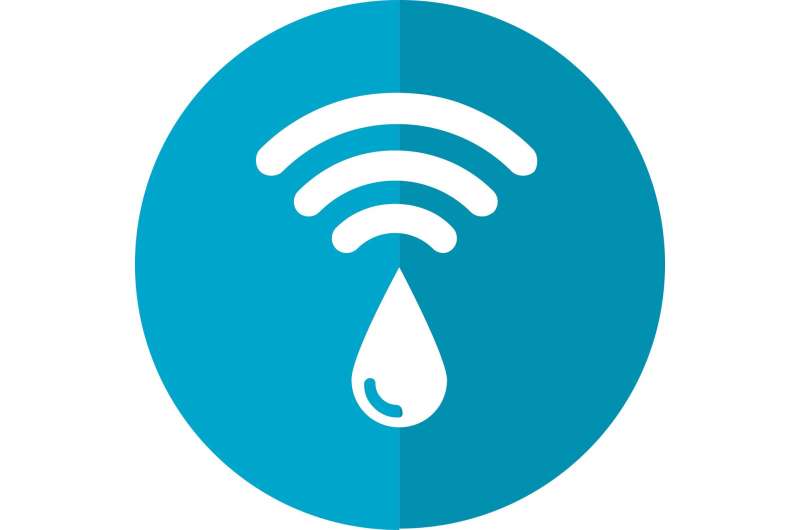Credit: Pixabay/CC0 Public Domain
People with type 1 diabetes can improve their blood sugar control while reducing time with low blood sugar, or hypoglycemia, using Insulet Corporation's Omnipod 5 Automated Insulin Delivery System compared to their standard insulin therapy. Results from an industry-sponsored study of the latest Omnipod, the first tubeless, wearable insulin pump, will be presented at ENDO 2021, the Endocrine Society's annual meeting.
The Omnipod 5 System underwent three months of at-home testing in 128 adults and adolescents ages 14 to 70 years and 112 children ages 6 to less than 14 years. All study participants have type 1 diabetes and were first followed for two weeks using their standard therapy, either multiple daily insulin injections or an insulin pump. Using Omnipod 5, participants experienced significant average improvements in both hemoglobin A1c, a measure of blood glucose (sugar) control over the past several months, and the percentage of time the participants stayed within the recommended target glucose range (70 to 180 milligrams per deciliter), the researchers reported.
"These study results represent an advancement in diabetes therapies with a fully wearable device that enables continuous automated insulin modulation. This will expand the available treatment options for people with type 1 diabetes," said the study's senior investigator, Trang Ly, MBBS, FRACP, Ph.D., Senior Vice President and Medical Director of Insulet Corporation.
Insulet funded this study and manufactures Omnipod 5, which is under review by the U.S. Food and Drug Administration. It is an update to the Omnipod DASH and the original Omnipod System, which are sold in the U.S., Canada, Europe and the Middle East.
The Omnipod 5 System, according to Ly, is the first tubeless automated insulin delivery system integrated with the Dexcom G6 continuous glucose monitoring (CGM) system. She said this commonly used glucose monitor automatically measures glucose levels every five minutes and communicates directly with Omnipod 5. The Pod is now designed with an embedded algorithm that adjusts the pump's insulin delivery automatically to a customizable glucose target, based on the CGM value and trend.
Users of Omnipod 5 inject insulin into a single-use Pod, which adheres to their skin for 72 hours of continuous infusion of insulin. At mealtimes, the user administers a bolus dose of insulin which is controlled by the Omnipod 5 app on the user's personal smartphone or a separate wireless controller. Ly said the new system will have the ability to control the Pod from a compatible smartphone, making the wireless controller optional.
Ly reported that the adult/adolescent group's A1c averaged 0.4 percent lower with Omnipod 5 than when they used their standard insulin therapy, an improvement from 7.2 percent to 6.8 percent.
With Omnipod 5, their average time in the glucose range recommended by the American Diabetes Association (70 to 180 milligrams per deciliter) was 2.2 hours a day longer, or 9.3 percent better, Ly stated. Overall, this group was in target range nearly 74 percent of the time when they used Omnipod 5, while the general population with type 1 diabetes is often in target glucose range 60 percent or less of the time.
"Even though many of the study participants had their diabetes well controlled before the study, they still experienced improved time in the target glucose range, regardless of their baseline control. This shows the potential of the technology in the broader population with diabetes," Ly said.
One of their most important findings in the adult/adolescent group, according to Ly, was a reduction of time in hypoglycemia, measured on the sensor as glucose levels below 70 milligrams per deciliter, down to a median of 1.1 percent. Hypoglycemia is a dangerous drop in blood glucose levels. Only two episodes of severe hypoglycemia occurred, reportedly after user-initiated bolus doses.
Most study participants chose to continue using the Omnipod 5 during an extension of the original three-month study, which Ly said suggests a preference over their previous therapy.
Children participating in the study also had improved blood sugar control after using Omnipod 5. The average A1c dropped by 0.7 percent, to 7 percent, and the time in range improved by nearly four hours per day. One event of diabetic ketoacidosis (excessive ketones in the blood due to insufficient insulin) occurred, which Ly attributed to infusion site failure. She said one severe hypoglycemia event occurred that was not attributable to device malfunction.
"Omnipod 5 protects you from both high and low glucose values," Ly said. "It also is simple, intuitive, and easy to use."
Sue Brown, M.D., of the University of Virginia in Charlottesville, Va., will present the data for adults and adolescents during an oral presentation at the meeting. Bruce Buckingham, M.D., of Stanford University, will present the pediatric data in a poster presentation.
Provided by The Endocrine Society























